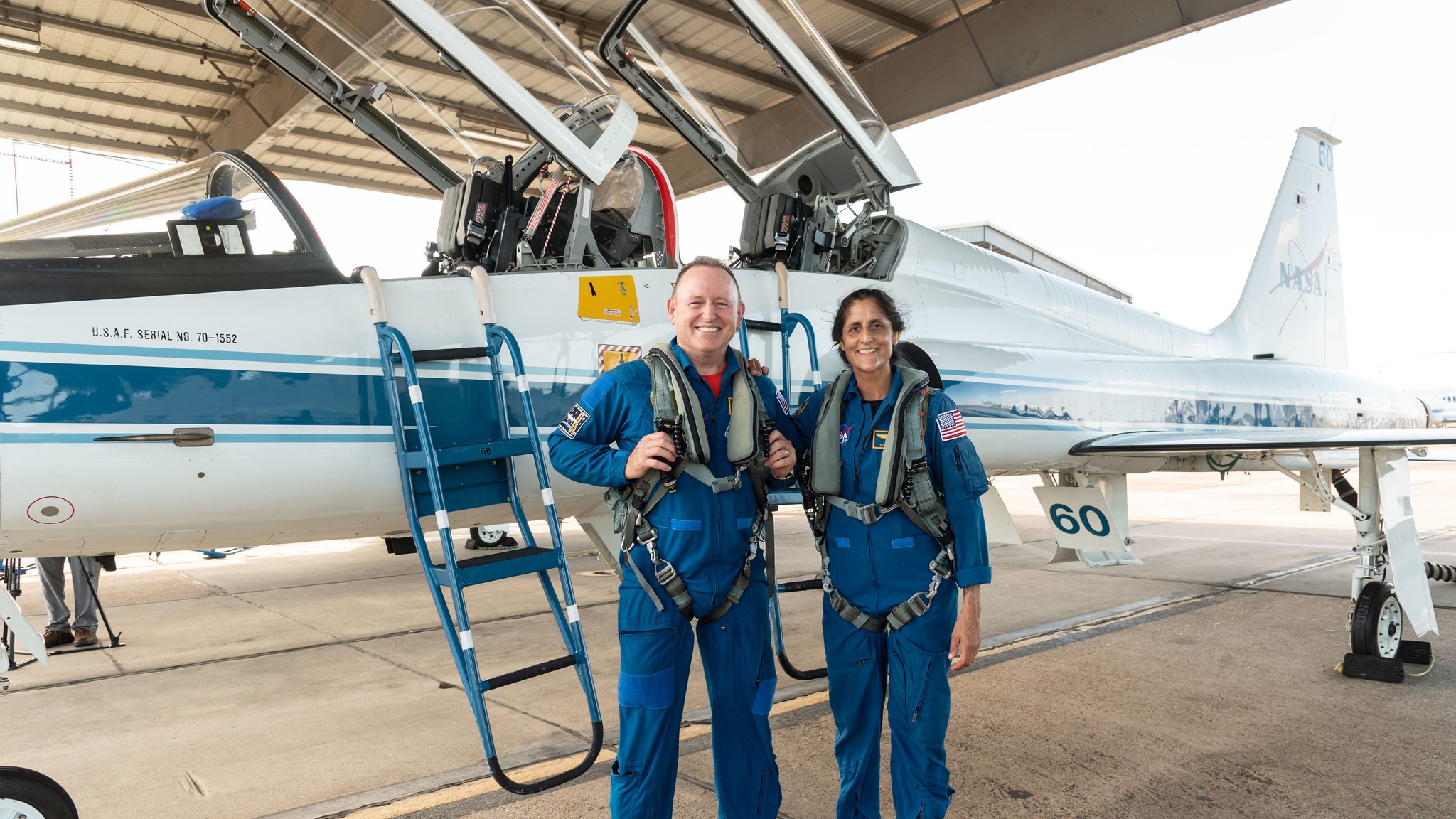

It was meant to be an eight-day mission. It might stretch well into next year.
This week NASA said that the space agency remains split on how to bring two astronauts back to Earth from the International Space Station, where they have been for two months. The two astronauts on the Boeing Starliner mission, Barry “Butch” Wilmore and Sunita “Suni” Williams, are both Navy veterans with extensive experience piloting aircraft. They went up to the ISS in June on Boeing’s Starliner spacecraft, the ship’s first crewed launch. They are still on the station, waiting for NASA to figure out how to get them down.
“We don’t just have to bring a crew back on Starliner, for example. We could bring them back on another vehicle,” Ken Bowersox, associate administrator of NASA’s Space Operations Mission Directorate, said during the Aug. 7 press conference.
The Boeing Starliner mission carried Williams and Wilmore to space on June 5. It’s part of NASA’s Commercial Crew Capsule program. However, their Starliner capsule has had several issues. Its original launch date was pushed back twice, once because of an issue with an oxygen valve. Once in space, NASA discovered four helium leaks as well as several thrusters failing. NASA and Boeing have said the Starliner capsule is safe to travel in, but the exact issue behind its troubles hasn’t been determined and Williams and Wilmore remain on the ISS.
If the Starliner can’t be repaired to bring the two astronauts home, NASA is looking at another alternative. That would be SpaceX’s Dragon Crew-9 spaceship, which is currently scheduled to launch in September. But in that situation, Williams and Wilmore would still be on the ISS for some time. If the SpaceX option is chosen, only two of the four astronauts set for the launch would go, to give the two currently in space seats for the return flight. And that flight isn’t until February 2025, according to the current schedule.
Subscribe to Task & Purpose Today. Get the latest military news and culture in your inbox daily.
NASA is still determining what is the best option to safely bring Wilmore and Williams home. Launching ships into orbit remains an incredibly challenging endeavor requiring extensive planning, even after six decades of humans doing so. NASA has previously said that the two are not “stranded” on the ISS.

Wilmore, who flew missions for the Navy supporting Desert Storm and U.S. operations in Bosnia, previously served as a test pilot and instructor for both the Navy and the U.S. Air Force. He joined NASA in 2000 and already has two trips to the ISS under his belt. Williams, another retired Navy captain, flew helicopters on overseas deployments including as part of Desert Shield before becoming a test pilot. She also has done two space missions prior to the Starliner flight. Both retired from the Navy with the rank of captain.
Extended stays in space beyond the planned duration of a mission are not unheard of it. American astronaut and U.S. Army surgeon Francisco Rubio spent 371 days in space after the Soyuz spacecraft he traveled on suffered issues. It was more than a year before he returned to Earth in September 2023. . Williams and Wilmore almost certainly will not end up in a situation like Sergei Krikalev, a Soviet cosmonaut who was aboard the Mir space station when the Soviet Union collapsed. “The last Soviet citizen” spent 803 days in space before the Russian Federation was able to bring him back to terra firma.
The latest on Task & Purpose
- Top U.S. special ops units held a major exercise off Alaska, 45 miles from Russia
- An Army officer is one of the stars of the U.S. women’s Olympic rugby team
- Army marksmanship instructor wins Olympic medal in rifle event
- Inside the recovery of MIA Americans from a secret jungle base
- Pentagon orders review of Medals of Honor given for Wounded Knee Massacre
